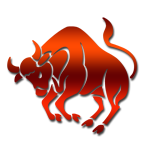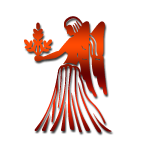Paid Services
Naga Panchami Festival - Nag Panchami Pooja
Author: Pratik Pandey | Last Updated: Sat 14 Aug 2010 12:02:50 PM

Pratik Pandey
Snakes are an integral part of our culture. According to the mythical stories, Lord Siva wraps the snakes around his neck like ornaments. Shiva Linga, the formless symbol of cosmic power, is usually also depicted with serpents. Lord Vishnu rests on the serpent in Ksheer Sagar. Shesha Naga keeps serving Lord Vishnu all the time. It is believed that whenever Lord Vishnu takes incarnation on earth, Shesha Naga accompanies him too. He came as Laxman with incarnation of Lord Rama, and as Baladev with the incarnation of Lord Krishna. On the other hand, the son of Lord Siva and goddess Parvati, Lord Ganesha, keeps the serpent with him in the form of sacred thread. It is to be noted here that only a specific category of serpents called ‘Naga’ is worshiped, and not all the snakes.
According to Hindu scriptures, it is believed that Naga or snakes are the descendants of seer Kashyap and his wife Kadru. Ancient texts say that the original place of snakes is Patal Lok. According to Sanskrit literature, the capital of Naga Lok is Bhogavatipur. Kathasartisagar, a Sanskrit text, describes the residents of Naga Lok and the place in great detail. Many other Hindu texts such as Garud Purana, Bhavishya Purana, Charak Samhita and Bhavprakash etc. also mention Naga and tell about various things related to them. In most of the scriptures, we get to know about Naga along with Yaksha and Kinnar etc. In the yoga literature, Kundalini is also depicted as a serpent lying in the root of spinal cord, and it is believed that Kundalini energy is sleeping there. If one succeeds in awakening this divine serpent energy, one becomes enlightened and gets many divine powers. According to Puranas, along with the 12 Adityas in the chariot of Lord Surya, 12 snakes or Naga are also placed there.
The famous Sanskrit poet Kalhan has shown the relationship of Kashmir with these divine snakes in his famous book “Rajtarangini”. One of the well known towns of Kashmir is called Anantnaga and it shows the historical evidence of this long relationship. Still the worship of divine serpents is quite prevalent in the hilly area of India. The rest of the India is also not untouched with this tradition. In every part of India, the worship of divine snakes is done in some form or the other. In many of the places, snakes are believed to be there ruling deity of that village.
It is widely believed that the fifth day of bright half of the Hindu month of Shravana provides special pleasure to divine snakes and this is the reason Naga Panchami is still widely celebrated all across the India. According to one of the mythical stories, once the Naga Loka got blazed due to the maternal curse and this immense pain of Nagas subsided on the day of Naga Panchami. It made this festival so widely known. According to Bhagvata, when the king Janmejaya started performing Naga Yajna to destroy all the snakes, on the day of Naga Panchami, the son of recluse Jaratkaru, Aastik, rescued and saved them. This is one of the reasons of celebrating Naga Panchami. In various places all across India, it is a tradition to make five idols of snakes each with the five heads using gold, silver or the wood pen. The divine snakes are worshiped with milk, Panchamrit and Kheer.
In its true sense, the festival of Naga Panchami inspires us to protect snakes. Every creature has its unique importance in preservation of environment and forests, and the snakes are one of the most pivotal creatures in this regard, and they are etched in over faith and tradition.
 Best quality gemstones with assurance of AstroCAMP.com More
Best quality gemstones with assurance of AstroCAMP.com More
 Take advantage of Yantra with assurance of AstroCAMP.com More
Take advantage of Yantra with assurance of AstroCAMP.com More
 Yantra to pacify planets and have a happy life .. get from AstroCAMP.com More
Yantra to pacify planets and have a happy life .. get from AstroCAMP.com More
 Best quality Rudraksh with assurance of AstroCAMP.com More
Best quality Rudraksh with assurance of AstroCAMP.com More
Get your personalised horoscope based on your sign.



















